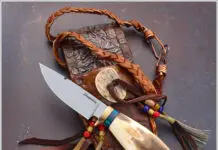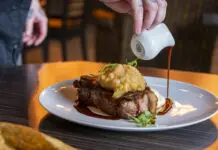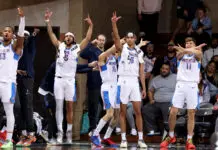The nerves and stress of the big day are over. Family and friends are en route home. Your parents are kvelling, while friends have memories of a lifetime.
Finally, it’s not about the wedding at all – it’s about the marriage, and it kicks off with a fabulous honeymoon. But where to go? Sure, there are tried-and-true, conventional honeymoon destinations, such as Hawaii, Las Vegas and California wine country.
However, the nation and the world have much more to offer as potential honeymoon destinations, and many are better depending on the season your first trip as newlyweds is planned. Just as planning well in advance is essential to a successful wedding, forethought should be applied when organizing your honeymoon too – and seasonality is a big part of that.
Spring
There’s really no getting around spring honeymoons without mentioning Paris, one of the most famed romantic cities in the world. Just remember that Paris is popular in spring. It bursts into astounding color as the winter recedes, drawing visitors from all over. Paris is so magical to most Americans that issues like where you stay and where you go to dine don’t much matter. Even the humblest accommodations will charm, and you don’t need to find any of the many Michelin-recognized restaurants to enjoy an exquisite meal. Paris’ vaunted cafe scene comes to life in the spring, and you will enjoy memorable meals at even the most humble bistros. Hint: Watch where many Parisians dine as a sure sign of culinary excellence. While in the city, should you wander far from your accommodations, don’t miss such obvious sites as The Louvre, the Eiffel Tower and Versailles Palace, if nothing else.
Rome is another wonderful spring vacation destination, in no small part because it is on the edge of the summer high season, so accessing attractions is easier than it would be a few months later. Rome’s history, beauty and architecture create an atmosphere of timeless romance, with delightful restaurants, cafes and shops around every corner as well as Romans who appreciate romance as much as the French. If you can tear yourself away from dining on some of the best food and wine on earth, you can decide which other aspects of Rome you might want to also enjoy. Choose from among historic sites and architecture, high-end shopping or the arts and culture. You can’t go wrong in any event – it’s entirely up to how you want to spend your time in public during your honeymoon.
Summer
Summer weddings are popular, particularly in states where summer is a mild time of year. Unfortunately, summer is also unbearably hot in some parts of the world, and no one wants to kick off their marriage soaked in perspiration.
London is ideal in the summer. Largely gone are the dreary, gray days with which London is synonymous. It will cost a premium for a summer visit, but, hey, this is a honeymoon, not a post-college travel adventure. Even in the busy season, you will find a host of different types of accommodations, from resort hotels to cozy and friendly bed-and-breakfast inns. Select based on your wants and needs. When out and about, you will definitely want to experience pub life in London, which can be found virtually anywhere and offers some of the city’s best indigenous cuisine. Must-see sites include Big Ben, Buckingham Palace, the Tower of London, St. James Park and the British Museum, to name but a few. To fully experience the romantic ambiance, take a stroll along the South Bank of the Thames or take in the fantastic theater in London, arguably second only to the magic of Broadway.
For the more domestic travel-oriented, consider Cashiers in North Carolina. In recent years, it’s become a travelers’ favorite, and with temperatures some 20 degrees cooler than its lower-altitude neighbors, summer is a great time for a honeymoon. Here, the emphasis is on romance and privacy, but Cashiers’ singularly unique geography boasts hundreds of waterfalls, quiet lakes, stone mountains and amazingly beautiful forests. Accommodations range from friendly B&Bs to exquisite pampering, depending on what you’re looking for in a honeymoon experience. Still, a picnic in “The Heart Of The Blue Ridge Mountains” is hard to beat in terms of romance.
Fall
The cruelest season of all, a harbinger of the winter to follow, fall makes planning difficult since late summers and early winters can foil any plans.
Still, there are a few options that are deliciously appealing.
The mild weather cries out for a slightly off-season visit to the Amalfi Coast. In September or October, the water remains temperate and a prime attraction. From the Footpath of the Gods to Villa Rufolo, most attractions are open and less crowded than they are in the summer. Stretching along the southern side of Italy’s Sorrentine Peninsula, the Amalfi coast dazzles with its mysterious grottos, craggy cliffs and shimmering bays. Grab a seat on the sea side of a regional bus to soak up views on the fabled route from artsy Positano to Amalfi, or take to the waterfront or eclectic shopping destinations to help make your honeymoon memories come alive for loved ones. The Amalfi Coast is an excellent way to get away from it all while also enjoying one of the most beautiful places on earth. Plan for a romantic stay, undisturbed by a host of activities, and enjoy the indescribable beauty of the Italian coast – and that of your newly acquired nuptials.
If a domestic honeymoon is more to your liking, consider Tennessee’s Gatlinburg. The Smoky Mountain icon might be best known for shoulder-season skiing, but year-round it remains a beautiful American setting that is just low-key enough to be ideal for honeymoons. Small-town charm deep in the mountains is one appeal, complete with small shops and venues and a delicious lack of fuss. While you might not find many hotels with honeymoon-specific accommodations, you will find places for affordable stays – and plenty of warm people interested in hearing your personal story. While in town, climb to the top of the magnificent mountain and shop for local artisan crafts and Native American specialties. Here, the romance is in the spectacular outdoor locations, the solitude and a quaint Americana that will remain a fond memory for decades to come.
Winter
Unless your idea of a romantic honeymoon is being snow-bound in a mountain cabin – which doesn’t sound bad to many – winter honeymoons can be tricky. There are travel delays, heavy snow and even more treacherous elements to deal with in various parts of the world.
You don’t have to worry about that in Palm Beach, north of Fort Lauderdale in Florida. The tony town is its most tolerable in winter, when the insects retreat to the Everglades and even mid-day temperatures are pleasant. There aren’t a ton of attractions here, so the emphasis on elegance and the waterfront is key. The Breakers is a one-stop destination for accommodations and activities, in addition to luxurious pampering and services. Terrific local theater and high-end shopping abound in what is the town’s high season, but don’t miss the action on Clematis Street or on the waterfront to experience the very best of Palm Beach.
If you’re looking to get out of the U.S. for your winter honeymoon, it’s the ideal time to visit the Caribbean. With more mild weather and no risk of hurricanes, it’s an ideal time to visit St. Maarten. It’s the only island in the world split amicably between two different nationalities – the French and Dutch. The Dutch side of the island, while not as well kept, permits gambling and other things tolerated by the Dutch. More romantic, if less anything-goes, is the French side, a cultural marvel. On one hand, island locals are as laid-back as elsewhere in the Caribbean. On the other are the French aspects – incredible bakeries, restaurants and wine, often flown in from France daily. Think low-key beach relaxation here, in addition to acclaimed food and wine. Grand Case and Club Orient Beach Resort are good places to start. Low-stress Caribbean culture abounds, which with then paired with French food, specialty items and wine, make for a distinct and unforgettable experience.























 Photo by Casey Hanson.
Photo by Casey Hanson. Photo by J. Christopher Little.
Photo by J. Christopher Little. Bright, bold colors are quite popular. Designers are using a variety of bold colors, giving brides plenty of fun, fresh options.
Bright, bold colors are quite popular. Designers are using a variety of bold colors, giving brides plenty of fun, fresh options. Whites are everywhere this winter, from runways to vanities. Some of the latest and greatest in the world of beauty conjure the image of a snow-dusted landscape. Brand new from Bliss, blisslabs active 99.0 Refining Powder Cleanser is a unique formula that delivers sulfate-free exfoliation with a creamy, gentle texture.
Whites are everywhere this winter, from runways to vanities. Some of the latest and greatest in the world of beauty conjure the image of a snow-dusted landscape. Brand new from Bliss, blisslabs active 99.0 Refining Powder Cleanser is a unique formula that delivers sulfate-free exfoliation with a creamy, gentle texture. Photos by Scott Miller and J. Christopher Little.
Photos by Scott Miller and J. Christopher Little.